#the concepts i was attempting to convey were so far beyond my skill level at that point
Explore tagged Tumblr posts
Text
after spending the day rereading my first novel for the first time since i wrote it, i have a message for 16-year-old izzy:
you did great.
#IT WAS MESSY. so so SO MESSY. i cannot overstate the messiness.#the concepts i was attempting to convey were so far beyond my skill level at that point#and the plot was so overcomplicated and poorly executed#but there was So Much Love in this thing. so much Passion and Intent and Hope.#it’s still to this day the most ambitious thing i’ve ever attempted#and i’m so glad i did. because i love having it now to look at and i love how the ideas have grown and changed with me as i’ve learned#until we’re here. now. and i’m gearing up to scrap and rewrite the entire thing with a new premise that might finally do it justice.#i’m very proud of young me for the time and effort and perserverence that went into cursed draft 1.#(which is rly like cursed draft 4 being realistic but. yknow.)#idk. i’m rly happy i reread it and that i was able to enjoy it without judgment#and i’m rly excited bc i can see it for its parts now and i know how to take what i loved and amplify it into a truly viable story. :’)#ALSO if u wanna see a whole reaction thread w snippets lmk i can link u to my twitter thread! or just go follow me there! im @izzylizardborn#izzy.txt 2019#cursedwip
12 notes
·
View notes
Text
The Untamed: unsorted
Well... I am nothing, if not eccentric, after all. Why not publish a huge post all of a sudden? :)
The Untamed (СQL) is an abyss, and I am still falling, grasping at some scattered thoughts... that tend to arrange themselves in equally chaotic blocks of thoughts, which, in turn, multiply questions successfully.
Spoilers ahead, I guess...
I.
The timeline of СQL is more than a little blurry, and when I try to calculate, how old Wei Ying was, when he died, I come up with the sorrowful conclusion he couldn’t be more that 21, probably younger. Which, in turn, means that the post-time-skip Sizhui is, actually, of the same age or even older than Wei Ying and Lan Wangji were, when they did a lot of things I honestly can’t imagine the new generation pulling off, even physically/magically, let alone psychologically (although I wouldn’t go as far as to call young LWJ and WWX mature - they clearly were not, and that was a huge part of the tragedy foundation, in my opinion). The young disciples are referred to as ‘children’, and they truly are. Compared to 16-17 year old LWJ and WWX, they are very, very young, inexperienced and not especially capable – while still being quite skilled and smart. And it’s both fabulous and painful to watch. Fabulous because it’s a very vivid and authentic demonstration of how exceptionally gifted LWJ and WWX are (and were); and painful because, unfortunately, not all of their greatness comes just from inborn talents.
II.
I am easily charmed by languages, but СQL, being the third Chinese dorama I have ever watched, is still the first one to so profusely tempt me to learn Chinese – in order to translate the songs and to understand the subtleties of the dialogues.
III.
I can’t get rid of the impression that the concept of rules/order breaking and punishment/atonement is fundamental for СQL (and its world). As far as I am aware, the Chinese culture does tend to be quite severe in this regard, but right now I am considering the symbolic layer of the process rather than the harm/good/efficiency of any particular method. And I wonder, whether I am imagining things or Wangji’s history of ‘transgressions’ and punishments within his sect is really openly symbolic and not merely coincidental.
My interpretation certainly lacks some special cultural insight because I can’t help being of European origin, so I read all the codes as a European would, first, and only then make an attempt to switch lenses and decipher the message, taking into account my scarce knowledge of the Chinese (and Asian) culture.
And yet...
The first time (drinking) Wangji is not only completely innocent, but also a ‘victim’ of Wei Ying’s careless (and questionable) mischief. They share the punishment (and we encounter the number 300, by the way), but Wangji is obviously (and rather fiercely) on his own here, and evidently by choice, despite Wei Ying’s sincere efforts first to exclude and then to include him. Wangji, just as obviously, truly believes he deserves the punishment – not for drinking as such, I think, but for lowering his guard and being not attentive enough: internally, he substitutes one transgression with another, and the equation works for him (actually, it might be unfair, but quite fortunate for their future relationship that Wangji blames himself or, at least, blames himself more than Wei Ying). To put it in a nutshell, for Wangji, the system and order are intact and non-contradictory: he is understandably upset, even angry, but hardly shaken, and simply intends to do better than that in the future, so to say. It’s hard to speculate, if this is Wangji’s most unpleasant experience so far or not, but in any case, the psychological pressure is minimal and reproach is rather mild (and I am really surprised, Lan Xichen didn’t find all that story highly suspicious… or was it his indirect method of showing WWX that he hadn’t been told on?..)
The copying of the rules happens after a considerable amount of… experience, if not time. And the transgression is not specified, but hinted at very heavily. I also wonder, if Lan Qiren realized an additional message he conveyed through his choice as well as through his general treatment of his nephew during that meeting: a strict reminder that, a war hero or not, LWJ is still too young to have an opinion. Wangji accepts the book of rules reverently, accepts the punishment… the word, that springs to mind is ‘habitually’: he doesn’t disregard it, per se, he doesn’t devalue the fact his uncle is not happy with him, he still wants to do better, but… there are things of greater importance to him now, and LWJ is so focused on them that he makes the request about the restricted books at the least suitable moment, really. (And I believe this dismissal does cut him rather deep.) The system still works, but the seed of the conflict is already planted.
The third episode seems pivotal in itself: we actually don’t know, what the punishment for letting WWX and the Wens go was, except for having to kneel, while being lectured, but this time this is a result of a conscious choice to do something that definitely wouldn’t be approved. And I can’t remember a single second of the screen-time, when Wangji would look repentant: conflicted, upset, slapped (when Lan Qiren mentions his mother), stressed (his uncle uses some pretty cruel techniques that border on manipulation, to my mind), but not sorry at all – not for letting the fugitives go, at least. And comparing the shades of Wangji’s silence here and on the previous occasion, this one seems somehow more determined. And closed-off. And there is no intention to do better, in regard to this transgression: the alternative he is being pushed to is unacceptable.
Kneeling again, for the whole day, in the cold, lifting a… what is it, as a matter of fact? It does look like a slightly smaller version of ‘the discipline whip’ we’ll see later, and if it is really so, then it’s beyond prophetic symbolic – it looks more like a promise on Lan Qiren’s part. :/ Anyway, my impression is that, for the first time in the series, LWJ is actively absent from the scene of his own punishment: he doesn’t reflect on it (I think he expected something like that), he also doesn’t mentally substitute one transgression with another to restore the balance (his inability to help Wei Ying is not something to atone for by kneeling). He simply endures. And thinks. And feels. Just not what he is expected and obliged to be thinking and feeling at the moment. And through all of this, Wangji is utterly, hopelessly and stoically alone and unaccepted. His concerns have been dismissed and care rejected by Wei Ying. His actions and decisions have been castigated by a significant authority figure (whom he loves and respects). If I am not mistaken, in the special edition Wangji’s loss-and-loneliness are somewhat artificially heightened through the pseudo-contrast because his moments are mixed with the moments of Wei Ying’s drinking with his new family, who values and appreciates him. (In reality their situations are just the same: they are both in anguish and feel helpless to change things they wish to change.) And, a cherry on top: we don’t know, what has been said initially, and by whom, however, we see that Wangji is released not by his uncle, but by some adept (or disciple). It might be a normal procedure, but it completes the picture of being unequivocally separated from any supportive figure and hints at a lack of closure, in a way, as there was no forgivenes-and-reconnection after the punishment.
I am struggling to verbalize, why exactly, but to me, this scene is, in a sense, more bitter than the next one, despite the circumstances.
During the next punishment Wangji is as actively present as he was absent during the previous one. And if then he was frozen in sadness, now he is all fire (fueled by grief, and guilt, and fury, and despair, yes, but fire, nonetheless). And the system and order get burned down: what Wangji re-builds during his seclusion is his very own set of rules. They do coincide with the Gusu Lan set, but not fully. And this is a point of no return because, filtered through Wangji’s own system of values, now they are more than just the elders’ lessons learned and tested – they are the only valid reference point for recognizing transgressions and ‘living with no regrets’.
(On another level, I am more than a little puzzled by several details here:
1) linguistics: do they really call this thing a discipline ‘whip’ in Chinese?
2) cultural message: as literally nothing could get in the way of filming a beating with an actual whip, the type of instrument has to make some sense, doesn’t it? (For now, I can’t think of any reason to choose this tool, though. Except the number 300 as 300 lashes are hardly survivable, even with a golden core.)
3) application: I can understand, why Wangji has his shirt on (although this is a more dangerous and torturous option: such a thin layer is no protection at all, but it will be hell to clean the wounds afterwards), but why is his hair down his back like that?..
4) consequences: the scarring looks rather odd, considering. (And again: it was definitely not a problem to paint whatever they had to, so – why?)
The only (and vague) explanation I can come up with is that the type and form of the tool is not important at all: it’s the intent and sentence that count, so the wounds and pain would be the same, even if the instrument looked like a rod or a cane. (Still doesn’t explain the hair, though.) And as for the scars, perhaps, not all of them have to stay forever, especially if the cultivator is very strong.
Well, no: unsatisfactory...)
IV.
I wonder... My first impression after watching the scene, where Lan Wangji cuts off Jin Guangyao’s arm, was that he was actually saving him from Baxia, separating Guangyao from the mark on his hand. And the only reason, why the spirit of the sword attacks Jin Ling next, are the drops of the bad/damned blood on the boy’s shoulder. But after the special edition I am not so sure.
V.
Lacunae and plotholes (or what I subjectively perceive as such) are extremely challenging and thought-provoking in this series. Right now, I wonder about the Wens: Wen Qing clearly stated she had asked one of the clansmen to look after WWX, so not all of them were going to surrender. Could it be that they were attacked at the Burial Mounds, when seeing the siblings off, and taken away by force?
...Enough. For now.
3 notes
·
View notes
Photo
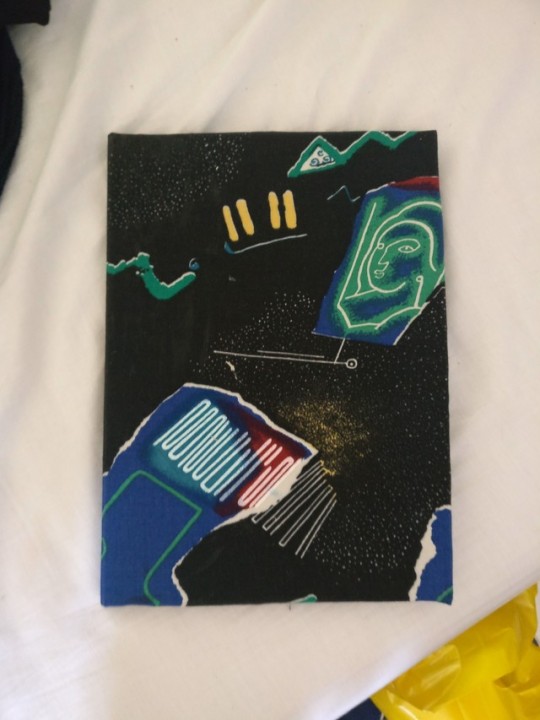

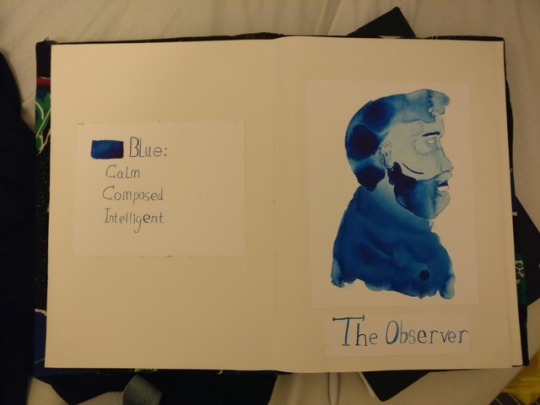
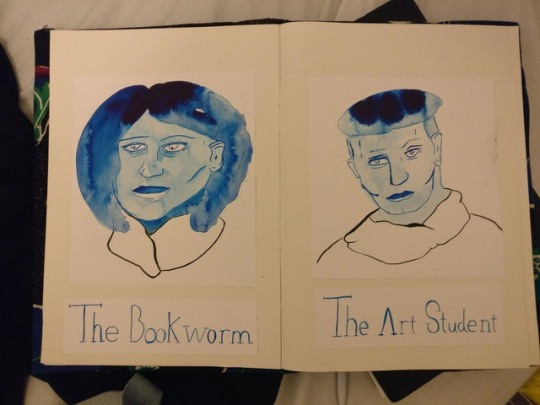
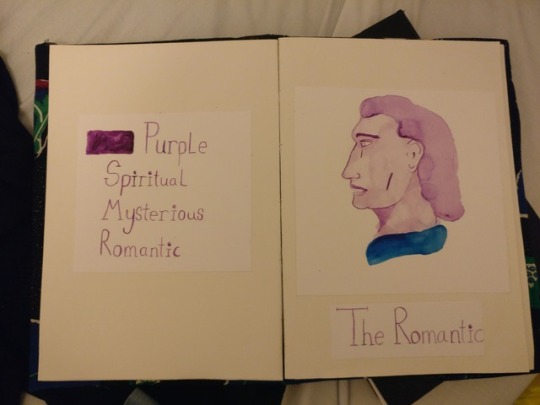
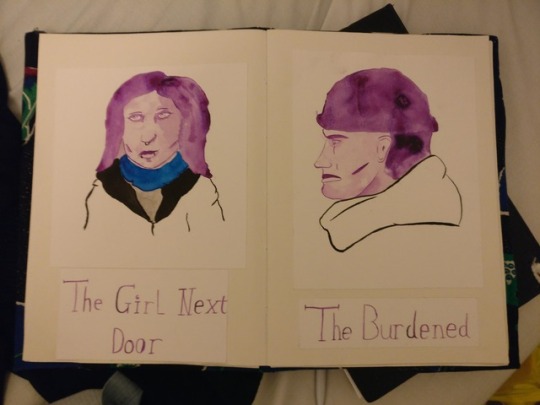
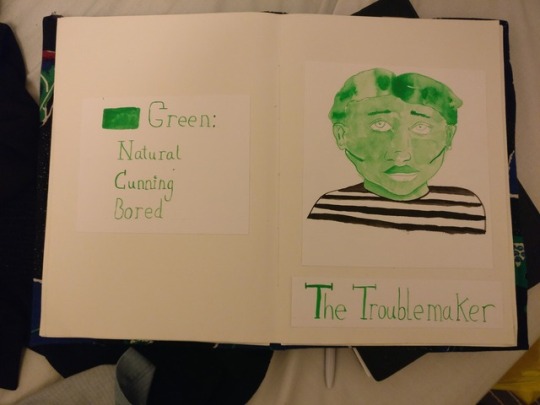



Here is the full book, all finished (minus the yellow because it exceeds the image limit, but its in the previous post)
Our exhibition is all done and over. The private view was really well attended, something like 200 people over the entire night which was great. Awesome to see so many people there. I wish I had made postcards of my work because I think my work would translate really well into postcards but no problem. Always next time.
I am pretty happy with the book, its got a good feel to it. I think that can really change the way people perceive your art if they are able to pick up and handle the piece. Here is my final critical review, detailing my opinion of my project and detailing how it all went.
Final Critical Review: Fresh
Overall, I am pretty happy with the way this project has gone. I have proven to myself that I am able to produce what I consider a strong concept, work effectively, do constructive research, create work that I am proud of and am able to tackle issues that I thought would ruin my project. I came to a difficult wall to climb over before my interim assessment but I’ve been able to push past and come out on top of it. I realised my original concept wasn’t strong enough so while I figured out how to revamp it, it paused the majority of my work, so I ended up behind. However I was able to get back on track and produce something for our collective exhibition at the Undercroft, and believed it was to the same standard to the majority of my peer’s work.
My original concept was to produce lots of sketches of strangers that I observed on the street, hoping to present a clear line of improvement at an artistic skill that I found unfamiliar. I later came to the conclusion that this concept wasn’t strong enough and had to take a step back. I needed something with more depth but didn’t want the research and work I had already done to go to waste. So I started to look at the 100 (ball park figure) faces I had drawn and what I had captured already. In some I had managed to get their expression and character down onto paper quite well. So I started to look at emotion and eventually looked at expressionist art and how they convey emotion. I liked the way in which emotion was conveyed with colour and decided to base my new concept on that. I went around creating a book presenting illustrations of strangers, and used colour to heavily convey the emotion I observed from briefly watching them. The book title would be ‘Strangers’ and I would create the book myself, learning how to stitch and bind it together, along with the cover of the book.
Originally I researched mostly portrait artists, such as David Hockney and Hernan Bas while also looking at illustrators that I thought approached the human face in an unique way. Alongside this I looked at a face proportion book by Jack Hamm to better acquaint myself with the ‘rules’ to drawing the face. Once I redrafted my project, I looked at German Expressionism from the early 20th centuries such as Karl Schmidt-Rottluff and Emil Nolde, two renowned expressionists who focused on using colour as a means to express emotion. From this I started to look at the psychology behind colour, and its use within branding. I conducted a small questionnaire where I asked three of my friends if particular colours invoked certain emotions. From this I learnt that it is primarily a subjective view but did see similarities between some answers. Along with this, my previous concept left me sketches of strangers which I now count as physical research, gathering source material to use as a reference for the vague characters I created. I looked into an artist called Dennis Brown or ‘Bagger43’ who heavily influenced my use of ink within my project and the methods I used. I also researched book making tutorials from youtube to learn how to stitch and bind.
Obviously I had issues with my previous concept. It started when I realised that although my project did show progression, I felt the improvement wasn’t great enough for me to feel proud of and present in our exhibition. If I had considerably more time, then I would have felt a lot happier about it. I resolved this project through broader research, simply looking for something to build upon, which eventually I found. Other problems I encountered was my difficulty with time planning. It happened in my last project and happened again up until my interim assessment, where I made small weekly plans, simply setting myself my aims and what I wanted to explore. Other than that, the smaller issues I had were learning to stitch, which took a few attempts but I soon gained the hang of it, although my final book has started to fall apart but they may have been from mistreatment during the exhibition. A handle with care sign might have been a good idea.
As I mention, time planning has always been an issue for myself. I tend to work by acting and then seeing where that takes me for the next logical step. Once I learnt that it was a marked factor for our piece, I started doing weekly plans. Although not too detailed, it allowed me to prepare and take logical steps to my next action so I could make sure I spread my work and time around evenly.
I learnt quite a lot during this project. I have become much more proficient at drawing the human face as the basic proportions have become much more familiar to me now. I used Jack Hamm’s proportions books to learn these skills, along with some interesting exercises to play around with. Also from watching Bagger’s videos I learnt the technique of soaking ink back up to leave a stain, something I used for all of my final images. Other skills I have learnt are how to bind a book, which I learn of a youtuber called Sea Lemon. This is a new skill that I found quite enjoyable and am very glad I was able to get this out of project.
Conclusions about my own work that I came across are mostly that I still have a lot to learn when it comes to art. Although I have shown improvement, I’m still very far off where I want to be. Relating more to my original project and through the act of repetition, any skill can become familiar is enough time and efficient practise is put in. By this I mean the time spent learning a new skill should be based around self criticism and improvement. Don’t focus on skills that are already easy, but on improving skills that appear difficult. Through this, progression will be more apparent and is a better use of time.
I like to think my work can be appreciated by all audiences. The use of vibrant colour and the ink drop effects may appeal to a younger audience while also an older audience can appreciate the relation of colour to emotion. Also since I have presented my final piece as a book, it becomes very hands on. To have something that you can hold and flick through is a nice way of condensing content together, allowing you to focus on an image at a time while also getting a feel of the design and craft.
In conclusion, I think that the work I have produced is to the standard someone at my level of the course should be producing. I have shown a variety of skills in art and design, have a well thought out concept that goes beyond the visual side of the art. Alongside this I have shown that I am capable of working artistically with my thought process and my ability to solve issues, large and small. I wasn’t afraid to revamp my concept and push past previous stubbornness to achieve a new goal.
0 notes
Text
Interview with Christian Hopkins
We at platform PHOTO recently had the pleasure of interviewing young photographer Christian Hopkins, whose images experiment with combining self-portraiture and conceptual techniques, achieving dramatic and emotive results. Christian’s path into the photographic world was instigated when he received a camera as a gift and despite his reservations, forced himself to start photographing. Photography made him see the world in a more beautiful light and soon became a tool for Christian in battling his demons, providing a form of therapy in coping with his depression and allowing him a channel to communicate his emotions. Here, Christian opens up to us, offering an insight into his often arduous and meticulously thought out photographic process.
platformPHOTO: Hi Christian, please tell us about yourself, your life and how you discovered photography.
Christian Hopkins: It’s difficult to talk about myself with any sort of brevity, not quite because I have so much to say about myself, rather, talking about myself and my life in such a small space means I need to identify the most defining aspects of myself and how I’ve spent the last 20 years on this earth. I can say with confidence that I cannot confidently say I know what those are. I had always been a wallflower. My opinions were simply a reflection of whoever was speaking to me, and to describe my true self was akin to describing the color of a mirror. Ironically, I had simultaneously held a feverish desire to break away from the mundane and seek undiscovered beauty. I was often called the “creative” one whenever I was in a situation that involved art or expression because I was never satisfied with taking the obvious path and becoming forgettable. I wanted to take that path and mold it, twist it into something that was beautiful, yet made you question the reality of the path itself. Indirectly, it was that desire that got me into photography. I was going on a trip to China and my mom bought me a high-end point-and-shoot that I wanted nothing to do with. Since I was stuck with the thing, I forced myself to take a lot of pictures out of guilt for this “gift.” Of course, I didn’t want to just take pictures, I wanted to take GOOD pictures, or at least try to. Some might say being glued to your viewfinder while on vacation makes you “miss the moment,” but for me it magnified it. I started noticing things like complimentary colors, interesting perspectives, the behavior of light, and everything before me became richer. Since then, that lens became my third eye with which the world become so much more beautiful.
platformPHOTO: Your photographs come across as beautiful and somewhat haunting. To you, what makes a good photograph?
Christian Hopkins: I actually have a mini checklist that I go through when both creating and viewing photographs. It’s all still a bit amorphous, but I’ll assign a handful of attributes to a photograph, and I’ll like a photograph if each of those attributes are unique or engaging in some way. I usually start with subject matter (that’s pretty self explanatory), color, composition, perspective (that might not be the right word, but examples would be like a wide panorama or a tight crop of someones face or an aerial view of the ground), and a some others. Most importantly though are depth and purpose. Depth is the ability for you to get lost in a photo. Where all the prior attributes swirl together and draw you inside the image. These are the images that you just stare at, and you keep seeing something new the longer you look. I also feel a photograph can have a lot more power when it has a meaningful purpose behind it, but keep in mind that none of these are required. They’re just things that I try to change up with each photograph. Never have the same attribute twice in a row (of course not even I can follow these “rules” most of the time).
platformPHOTO: How do you articulate your ideas, from conception to creation and post-production? Tell us about your creative process.
Christian Hopkins: Most of my concepts start with an emotion, particularly one that I cannot explain or identify. I get extremely uncomfortable whenever I’m not in control, and it’s particularly unbearable when that loss of control is coming from something as personal as my own mind. When this happens, I usually sit down and try my best to put that emotion into words. For example, with my picture “Defense Mechanisms,”, my general words were: “I love photography, but I’ve reached a point where my personal expectations of my own work have exceeded my skill level. Now every time I try to take a photo, I get frustrated because I’m never satisfied with the result, but I can’t stop taking pictures because so many people are waiting to see what I’ll make next. It’s all so unbearable that I’d forever cut photography out of my life, remove something that is so close to my heart, just to stop feeling this.” And once the words are there the picture just kind of…appears.
platformPHOTO: How challenging is it to be working alone when creating often complex self-portraits?
Christian Hopkins: Yes…..very, very, yes. I use a remote shutter release, and up until recently, I had this dinky little infrared remote that had an effective range of 10 feet and you had to hit this sweet spot on the camera, so I would spend so much time staring numb at the camera while I futilely press this button and then suddenly the red light will go on and I have two seconds (and no this couldn’t be extended, I tried) to frantically pose, then wait, then *click.* I would have to run and check how the picture turned out after every shot because if I took a whole bunch of poses at once and I didn’t realize I was out of the frame, then all those pictures would be unusable. With some shoots taking hundreds of attempts because I’m a bit of a perfectionist, let’s just say I get a lot of exercise. Also, clamps are a solo self-portraitist’s best friend.
platformPHOTO: Can you give some information about the post-production process to create your images. Do you usually have a clear vision of what you wish to achieve during editing or is it something that happens while you are editing your images? Are there any particular techniques that you use?
Christian Hopkins: Most of the time the photograph is already finished in my before I even pick up the camera. I don’t usually even sketch anything out. I already know what it looks like. I’ve seen it. Taking the picture is just a formality. With my composites, I don’t really have a consistent technique because each one is so very different. What you might call a “technique” I would just call common sense. Start building the background, then cut out and add all the subjects, then match their hues and tones to the background, then overall touch ups, and finally start working with all the adjustment sliders to solidify the tone of the image.
platformPHOTO: Are there any photographers or artists working with other mediums that have been inspiration to you? Perhaps because of their style or the subject matter that they tackle within their work.
Christian Hopkins: Nope.
platformPHOTO: You started photography as a form of therapy in coping with depression, but now it seems as though this medium of expression has become a challenge in itself for you. Have you found that channelling your feelings through conceptual photographs has helped you in dealing with or understanding your depression?
Christian Hopkins: It’s the only tool I have in this fight. How do you fight an enemy you cannot touch, cannot see, and, most distressingly, is yourself? When I create a photograph, it is more than just an image. It’s the manifestation of some demon that has been haunting me to the point where I can no longer function. It’s then that I need to create this picture to take that demon out of my head and onto the screen in front of me. It’s strange, some weeks I’ll refuse to leave my bed because the smallest inclines become mountains, but suddenly it’s 4 in the morning and I’m running around a fog filled field camera in hand for hours trying to find the perfect place to compose this image that I already finished the moment I got out of bed. It’s the sense of control that leads me to create. It’s knowing that now I am the one now who is creating the image, I am the one who chooses what goes where, who does what, and why they do it. Being able to convey an emotion through something I create proves to me that I now understand this emotion enough to accurately communicate it to others.
platformPHOTO: Last week, you posted a blank image on your flickr account saying goodbye to your followers and that you have decided to give up photography, stating: “I can’t do this anymore….I’m at the point where my expectations have exceeded my capabilities…” Do you still feel this way and would you be able to elaborate on what brought you to this conclusion? Is there any chance that you may return to your personal photography in the future?
Christian Hopkins: Imagine a crowd of over 4 million people, and the spotlight’s on you. There they stand, far beyond the limits of your vision in an infinite black void, all waiting for you to say something, but of course you have nothing to say. Yet they do not budge, and the stillness starts to crush you. Every new moment in the growing silence pushes every word down your throat, and that silence grows stronger because of it, creating an eternal loop of suffocation. And you cannot run, you cannot escape into your mind, because this is your mind. The crowd is there when you sleep, when you eat. It’s under your skin and in your blood, and it drives you mad. That’s what it felt like, no matter how untrue or irrational it seems, that’s what it felt like. Sometimes it would get to the point where I would just hold onto my camera and rock back and forth for hours. That is why I had to stop, but I’m still here, and I’m not done. I’ve found new ways to communicate these emotions through images, and they’re silently screaming to get out.
platformPHOTO: Thank you so much for your time today Christian, we have one last question for you. If we sent you to a desert island and allowed you to take only one picture with you by another photographer, what would this image be?
0 notes